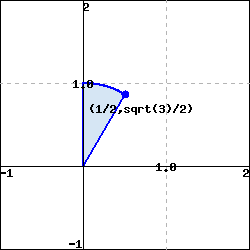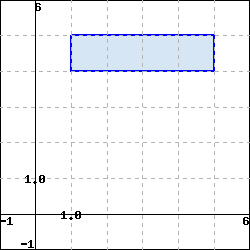Consider the double integral
where is the unit disk. While we cannot directly evaluate this integral in rectangular coordinates, a change to polar coordinates will convert it to one we can easily evaluate.
We have seen how to evaluate a double integral as an iterated integral of the form
in rectangular coordinates, because we know that in rectangular coordinates. To make the change to polar coordinates, we not only need to represent the variables and in polar coordinates, but we also must understand how to write the area element, in polar coordinates. That is, we must determine how the area element can be written in terms of and in the context of polar coordinates. We address this question in the following activity.
From the result of
Activity 11.5.3, we see when we convert an integral from rectangular coordinates to polar coordinates, we must not only convert
and
to being in terms of
and
but we also have to change the area element to
in polar coordinates. As we saw in
Activity 11.5.3, the reason the additional factor of
in the polar area element is due to the fact that in polar coordinates, the cross sectional area element increases as
increases, while the cross sectional area element in rectangular coordinates is constant. So, given a double integral
in rectangular coordinates, to write a corresponding iterated integral in polar coordinates, we replace
with
with
and
with
Of course, we need to describe the region
in polar coordinates as well. To summarize:
Example 11.5.3.
Let
on the disk
We will evaluate
In rectangular coordinates the double integral can be written as the iterated integral
We cannot evaluate this iterated integral, because does not have an elementary antiderivative with respect to either or However, since and the region is circular, it is natural to wonder whether converting to polar coordinates will allow us to evaluate the new integral. To do so, we replace with with and with to obtain
The disc is described in polar coordinates by the constraints and Therefore, it follows that
We can evaluate the resulting iterated polar integral as follows:
While there is no firm rule for when polar coordinates can or should be used, they are a natural alternative anytime the domain of integration may be expressed simply in polar form, and/or when the integrand involves expressions such as







